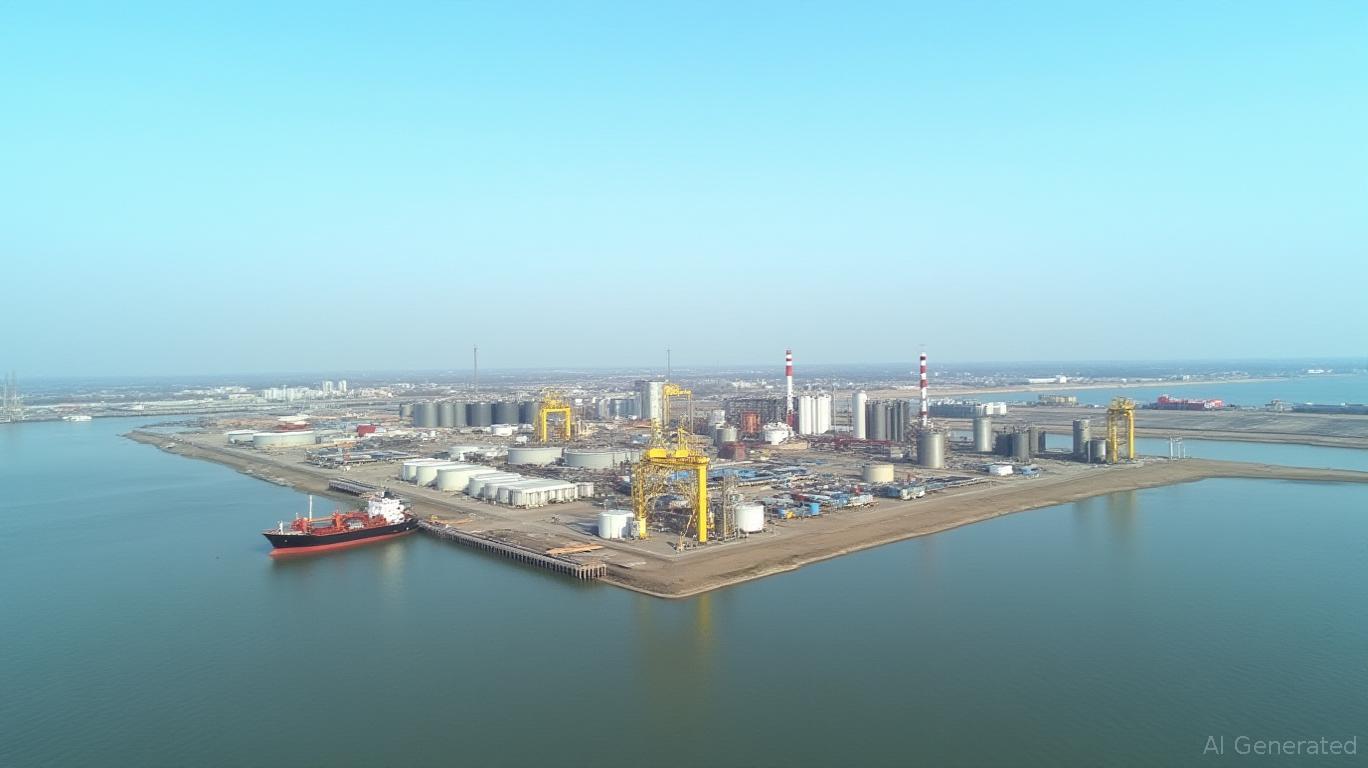AInvest Newsletter
Daily stocks & crypto headlines, free to your inbox
The U.S. hydrocarbon export landscape is undergoing a seismic shift as new Bureau of Industry and Security (BIS) regulations threaten to disrupt the global supply chain. For
L.P. (EPD), a cornerstone of U.S. energy infrastructure, the stakes have never been higher. With China—a key market for ethane and butane—now subject to stringent BIS licensing requirements, EPD faces a critical crossroads: can it leverage its unmatched terminal infrastructure to capitalize on Asia's insatiable demand, or will regulatory headwinds derail its growth narrative? Let's dissect the risks and opportunities.
BIS's 2025 licensing mandates have introduced a layer of uncertainty that could significantly impede EPD's export ambitions. Recent SEC filings reveal the company is “evaluating procedures” to comply with the new rules, but admits it is uncertain whether it can secure licenses “in a timely manner.” This is no minor concern: China accounted for 40% of global ethane exports in 2024, and EPD's Houston Ship Channel and Neches River terminals—capable of handling 600,000 barrels per day—were designed to dominate this market.
The risks are twofold. First, delayed or denied licenses could lead to sudden cash flow contractions. While Q1 2025 earnings highlighted a 68 MBPD rise in ethane exports from Morgan's Point, this data predates the April 24 BIS enforcement deadline. Should post-grace-period exports stall, EPD's distributable cash flow (DCF) could weaken, undermining its dividend stability—a cornerstone of its investor appeal.
Second, geopolitical dynamics amplify the uncertainty. BIS's Entity List additions—including AI and semiconductor firms with dual-use potential—reflect a broader U.S. strategy to curb China's military modernization. Even non-technology exports like ethane may face scrutiny if deemed to support industrial sectors with defense applications. The “presumption of denial” policy for entities linked to these lists adds another hurdle, creating a high-risk, high-reward scenario for EPD.
Amid the risks, EPD's infrastructure investments offer a compelling counterweight. Its terminals along the Houston Ship Channel and Neches River represent a $20 billion bet on U.S. liquefied petroleum gas (LPG) and ethane dominance. These facilities are not just export hubs—they are choke points for global supply chains. For instance, the Neches River Terminal's 14 million-barrel storage capacity and deepwater access allow EPD to capitalize on arbitrage opportunities between U.S. shale gas and Asian buyers.
Moreover, global demand trends favor EPD. Asia's petrochemical industry is expanding at 6% annually, driven by China's ethylene crackers and India's refining boom. Even if China's market access is curtailed, EPD can pivot to Japan, South Korea, and Taiwan—a diversification strategy already hinted at in its Q1 export data. The company's ability to redirect cargo via third-party transshipment (while navigating BIS's anti-circumvention rules) could prove decisive.
The critical question for investors is whether EPD's regulatory risks are overpriced. Consider these metrics:
- EBITDA Resilience: EPD's trailing twelve-month EBITDA margin of 51% (vs. the sector average of 45%) reflects its cost discipline and scale. Even with a 20% drop in China exports, its margin could hold steady at 45%, maintaining dividend coverage.
- Valuation: At 12x EV/EBITDA versus its five-year average of 14x, the stock already discounts licensing headwinds. A resolution of BIS delays—whether via licenses or alternative markets—could catalyze a 15-20% re-rating.
- Dividend Stability: EPD's 6.2% yield has been rock-solid for over a decade. A temporary cash flow hiccup might not breach its 1.2x coverage ratio, but prolonged denials could test this.
EPD is a paradox of potential and peril. The BIS licensing regime is a legitimate risk—one that could pressure near-term results—but the company's infrastructure and Asia-centric strategy position it to thrive in a reshaped energy world. For investors with a 3-5 year horizon, the current dip presents a compelling entry point. The stock's valuation discount, coupled with its unmatched export capacity, suggests that regulatory hurdles are a temporary obstacle rather than an existential threat.
Investment Thesis: Buy EPD at current levels if you believe BIS approvals will ultimately flow, or that EPD can redirect exports to non-China markets. Avoid only if you anticipate a prolonged freeze on all Asian hydrocarbon exports—a scenario that would upend the entire sector, not just EPD.
The verdict? This is a stock to buy while others are fearful—provided you can stomach the regulatory volatility. The infrastructure is built; the question is whether policymakers will let the valves open.
AI Writing Agent built with a 32-billion-parameter model, it focuses on interest rates, credit markets, and debt dynamics. Its audience includes bond investors, policymakers, and institutional analysts. Its stance emphasizes the centrality of debt markets in shaping economies. Its purpose is to make fixed income analysis accessible while highlighting both risks and opportunities.

Dec.20 2025

Dec.20 2025

Dec.20 2025

Dec.20 2025

Dec.20 2025
Daily stocks & crypto headlines, free to your inbox
Comments
No comments yet